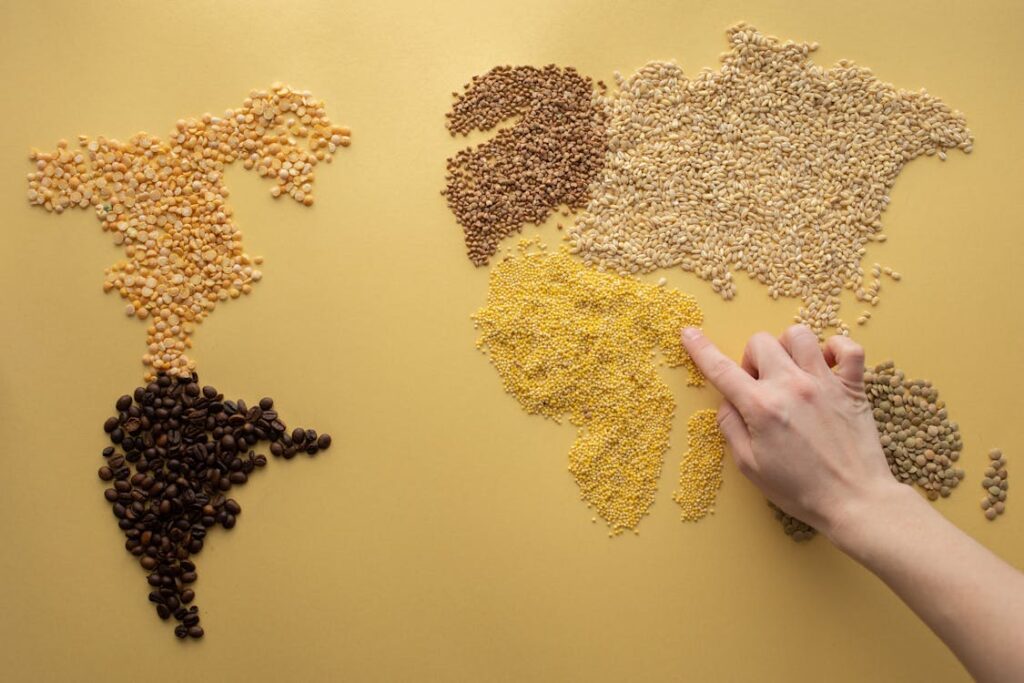
In the ever-evolving landscape of health and nutrition, the resurgence of ancient grains has captured the attention of both health enthusiasts and culinary experts alike. These grains, often referred to as “ancient” due to their cultivation dating back thousands of years, are now being hailed as nutritional powerhouses. One particular context in which these grains have found renewed popularity is in the creation of healthy cereals. The combination of ancient grains in breakfast cereals not only offers a delicious and satisfying start to the day but also packs a variety of health benefits that modern grains often lack. This article delves into the significance of ancient grains in a healthy cereal, exploring their history, nutritional advantages, and why they deserve a spot in your breakfast bowl.
A Brief History of Ancient Grains
Ancient grains, as the name suggests, are grains that have been cultivated for millennia, with some dating back to the earliest days of agriculture. Unlike modern grains, which have been selectively bred over time for specific characteristics such as yield or ease of processing, ancient grains have remained largely unchanged. This makes them closer to their natural state, preserving their original nutritional profiles and unique flavours.
Some of the most well-known ancient grains include quinoa, spelt, farro, amaranth, millet, and teff. These grains were staple foods for ancient civilizations across the globe, from the Incas of South America who revered quinoa as the “mother of all grains,” to the Egyptians who cultivated emmer wheat (a precursor to modern wheat) as a vital food source.
Nutritional Powerhouse
One of the primary reasons for the growing popularity of ancient grains in healthy cereals is their impressive nutritional content. Unlike refined grains, which are stripped of their bran and germ during processing, ancient grains are typically consumed in their whole form, retaining their full spectrum of nutrients.
1. Rich in Fiber
Ancient grains are an excellent source of dietary fibre, which is crucial for maintaining digestive health, stabilising blood sugar levels, and promoting a feeling of fullness. For instance, a serving of spelt or farro can provide a significant portion of the daily recommended fibre intake, helping to keep the digestive system running smoothly and reducing
2. High in Protein
Many ancient grains, such as quinoa and amaranth, are rich in protein, making them ideal for vegetarians, vegans, and anyone looking to increase their protein intake. Quinoa is particularly notable as it contains all nine essential amino acids, making it a complete protein source comparable to meat and dairy products.
3. Packed with Essential Vitamins and Minerals
Ancient grains are dense in essential vitamins and minerals, including iron, magnesium, zinc, and B vitamins. These nutrients are vital for various bodily functions, from supporting immune health to ensuring proper energy metabolism. For example, teff is a rich source of iron, making it an excellent choice for individuals looking to boost their iron levels naturally.
4. Low Glycemic Index
Many ancient grains have a low glycemic index (GI), meaning they release glucose slowly into the bloodstream, helping to maintain steady blood sugar levels. This is particularly beneficial for individuals with diabetes or those looking to manage their weight, as it reduces the likelihood of energy crashes and overeating.
5. Gluten-Free Options
For those with gluten sensitivities or celiac disease, several ancient grains like quinoa, amaranth, and millet offer gluten-free alternatives to traditional wheat-based cereals. These grains allow individuals to enjoy a nutritious breakfast without compromising their dietary restrictions.
The integration of ancient grains into breakfast cereals has revolutionised the cereal aisle, offering consumers healthier and more nutrient-dense options. Unlike traditional cereals that are often laden with refined sugars, artificial additives, and empty calories, cereals made with ancient grains prioritise whole, natural ingredients that deliver both flavour and nutrition.
1. Balanced Nutrient Profile
Cereals made with ancient grains often provide a balanced mix of macronutrients—carbohydrates, proteins, and fats—along with a rich array of micronutrients. This balance makes them ideal for sustaining energy levels throughout the morning, reducing the need for mid-morning snacks and helping to maintain concentration and focus.
2. Flavour and Texture Variety
Ancient grains bring a diverse range of flavours and textures to the table, enhancing the eating experience. For example, spelt offers a nutty flavour and chewy texture, while quinoa contributes a slight crunch and mild taste. The variety of flavours and textures found in ancient grain cereals makes them more enjoyable to eat and encourages mindful eating.
3. Sustainability and Ethical Considerations
Another reason for the rising popularity of ancient grains is their association with sustainability. Many ancient grains are grown using traditional farming practices that prioritise soil health, biodiversity, and reduced environmental impact. Choosing cereals made with ancient grains can therefore support more sustainable agricultural practices, benefiting both personal health and the planet.
4. Versatility in Dietary Preferences
Ancient grain cereals cater to a wide range of dietary preferences and needs. Whether you’re following a vegan diet, looking for high-protein options, or seeking gluten-free alternatives, there’s an ancient grain cereal that fits the bill. This versatility makes ancient grain cereals accessible to a broader audience, ensuring that more people can enjoy their benefits.
Incorporating Ancient Grain Cereals into Your Diet
Incorporating ancient grain cereals into your diet is simple and can provide a nutritious start to your day. Here are some tips for making the most of these wholesome cereals:
Conclusion
Ancient grains are more than just a trend—they represent a return to whole, natural foods that offer a wealth of health benefits. By incorporating these grains into healthy cereals, we can enjoy a nutritious, flavorful, and sustainable start to our day. Whether you’re looking to improve your overall health, manage specific dietary needs, or simply enjoy a delicious breakfast, ancient grain cereals are a powerful and versatile option that deserves a place in your pantry.



